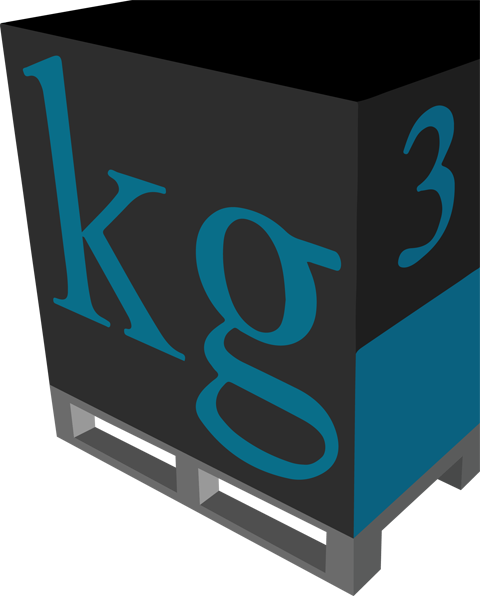Is "keep it simple" stupid?
Lee Eden, founder of kg³, explores whether or not it is possible to simplify freight tenders
When buying transportation services the complex rate structure can be your biggest challenge. A negotiation of air- and ocean-freight rates can quickly get bogged down in the small-print of fixed costs, minimums, fluctuating surcharges and weight-breaks. It is often difficult to see the wood for the trees. Are there ways to simplify it, or is it worth persevering in your struggle with the complexity?
One approach is to structure your tender in a straightforward and transparent way. Just design a rate template with only one column for an all-in flat rate per kg. Even if you have hundreds of lanes, it becomes a straightforward calculation to multiple the volume by the rate and compare competing offers. The forwarders hate it, but hey, you're the customer, you can do that! Alternatively, you might indulge your Logistics Service Providers (LSPs) with a few more columns, but work on reducing the number of rows: for example, by requesting a common rate per country, instead of making lanes for each origin/destination city-pair, you could shorten your file by thousands of rows. By reducing the number of cells in your spreadsheet you will get a more concise picture, be able to leverage your spend and negotiate greatly improved rates based on clear, hard numbers.
The danger, though, is that you might find yourself paying a premium for it. Every simplification you make results in assumptions and generates risk and complexity that the LSP has to manage. From a forwarder's perspective, a flat rate per kg will result in losses if your average shipment is smaller than expected, as they do have real per-shipment based costs, such as documentation fees. You can help mitigate that risk to a certain extent by allowing a column for a minimum charge. The traditional air-freight weight-breaks (100‑300, 300‑500 kg, etc) also address this issue. Now you might be quite happy to move risk to the provider. Indeed some uncertainty really is best managed by the LSP, for example, exchange-rate risk can be hedged effectively by providers. It rarely makes sense though, to force your providers to gamble on the big unknowns: they will give you a fixed fuel rate for the next 24 months if you absolutely insist, but you will pay for the privilege. Alternatively they will accept your requirement and see where the market takes them: if the business does not hold commercially you may find yourself back at the negotiating table or looking for a new provider.
Therefore, what is the right balance between too much complexity and too much risk? As kg³ has customers on both sides of the table (both shippers and LSPs use our procurement software, and freight forwarders rely on our Tender Management solution to respond to customer RFQs) we understand the need for reasonable compromise. Freight forwarders often work on a cost-plus model - their local stations are often more concerned with their P&L than with winning new global bids, and they quote accordingly. Specific local charges get passed on back-to-back or "as per outlay". There is no reason to accept such complexity, even if you have the analysis tools to cope with it (kg³ does, as it happens).
It is not necessary to provide absolute freedom on rate-structure format. Our recommendation would be a template that reflects the industry-standard charges but does not provide too many open "other charge" columns. An air-freight template, for example, would include a documentation fee, THC, fuel, security, AMS, etc. We would tend to insist on a single quotation currency, but recognize that fuel-surcharge will fluctuate during the validity period. This is acceptable, given a pre-agreed mechanism or index. This balance is something that the LSPs can work with, as their main risk-areas are addressed.
You can accept a reasonable level of rate-complexity if you have the capability to crunch the numbers. You absolutely must be able to compare the total all-in cost of competing rate-offers lane-by-lane. How else can you leverage your volume and make the most of the competition for your spend? The kg³ procurement solution, with its powerful rating engine, accurately compares complex rate offers, rolling up columns and rows into summarized sub-totals (including inventory in-transit working-capital impact). You get the negotiating power of an executive overview, allowing you to drive the numbers hard with targeted feedback, but without forcing your providers to take unnecessary, or even irresponsible, risk.
So is "keep it simple" stupid? Not in our view. It does make a lot of sense to reduce the complexity of freight-rates down to a few key numbers for a powerful negotiation, but use technology, such as kg³, to do it with a rate-structure that the providers can live with.

